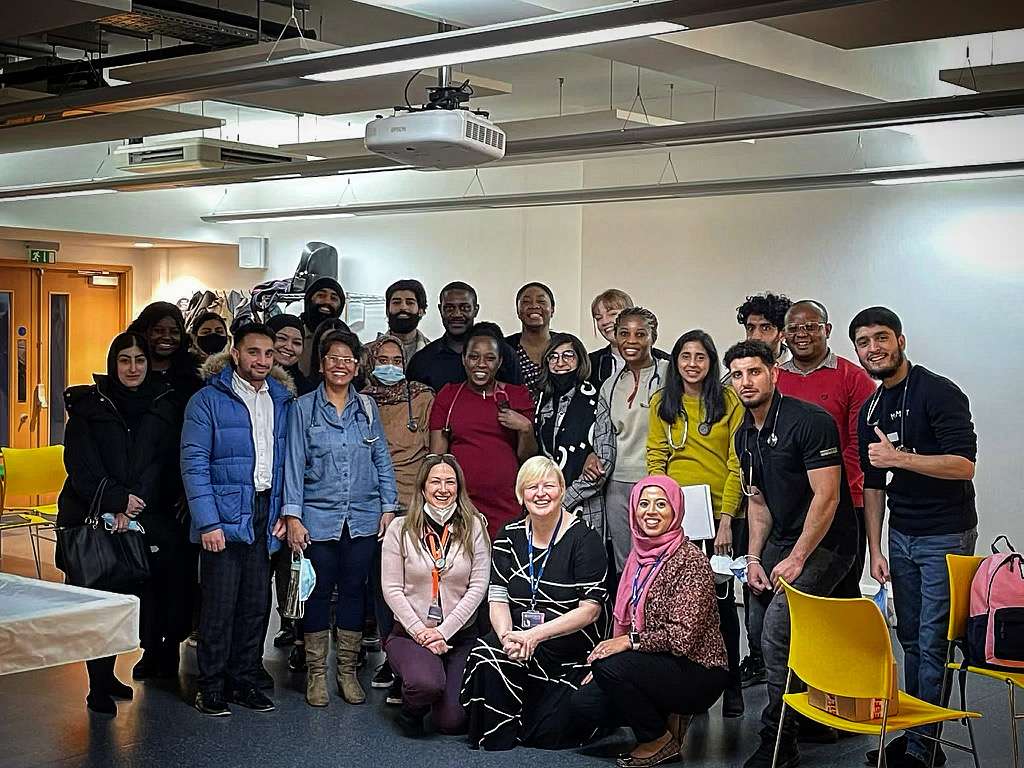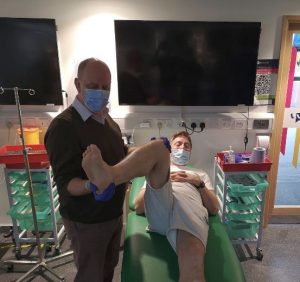
Recently my attention was drawn to an article, ‘It’s Not An Acting Job … Don’t Underestimate What A Simulated Patient Does”: A Qualitative Study Exploring the Perspectives of Simulated Patients in Health Professions Education”, which was submitted to the journal of the Society for Simulation in Healthcare about Simulated Patients (SP).
The article, whilst interesting and enlightening, discusses the work of the ‘normal’ SP, and shows how valuable their contribution is to medical education. However the title sums up the fact that an SP is more than just an actor who learns their lines and portrays a character. Any role player will be quick to alert you to the fact that, unlike actors, the SP has to give feedback on the communications skills of the student clinician. This is beyond what we expect an actor to be capable of doing.
A good SP can improvise around a common theme, for example breaking bad news. However each student will approach this in a variety of different ways and this is based on their communication style. Some may be hesitant to break the bad news, whilst others may be more exp-licit with their communication. It is the job of the SP to respond to the different approaches that students have effectively, and then give feedback on what the student did well and how they can improve their communication for the benefit of the ‘patient’.
Some students will build rapport readily and easily whilst others need feedback on how to do this more effectively. Non-verbal language also plays its part in communication as we have discussed in a previous post. However, if the SP is presenting with a specific physical condition i.e. central chest pains, the student will respond by performing an examination, for example ‘cardio-vascular’. An SP is unable to give feedback on this part of the process. This is where to Associate Clinical Educator (ACE™) excels.
What the article previously mentioned didn’t cover (and I wouldn’t expect it to) was how an ACE™ can take the interaction to the next level.
An ACE™ is not a Simulated Patient, he’s a simulated patient on steroids! On many occasions I have spoken to clinicians who mistake what we do for medical roleplay and/or that we are simply simulated patients. This is simply not the case.
An ACE™, whilst giving feedback on the communication, will also be able to quickly inform the student whether of not the examination itself is being performed correctly. For example, below is a typical respiratory examination as expected to be performed by a first year physician associate student:
-
- Introduction using full name and role
- Confirms patient’s full name and DOB
- Explains examination and takes informed consent for examination.
- Asks if they want a chaperone
- Washes/disinfects hands
- Exposes patient appropriately and maintains dignity
- Inspects the patient’s chest (looking for scars, asymmetry, both axillary area)
- Positions patient on the couch at 45 degree angle and asks if they have any pain anywhere
- Inspects the patient’s hands looking for peripheral cyanosis, clubbing, tar staining, CO2 flap
- Checks patient’s pulse (radial/brachial) checks for rate (90 bpm), rhythm and character
- Counts respiratory rate (offers to do for one minute: 18/min)
- Checks patients face for pursed lip breathing, central cyanosis, pale conjunctiva etc.
- Palpates patient’s chest checking for chest expansion and apex beat
- Percusses the chest (top middle bottom, axillar, compares left and right)
- Auscultates the chest (top middle and bottom and both axillar)
- Checks tactile vocal fremitus or vocal resonance
- Checks for sacral oedema, feet and legs (for swelling and tenderness)
- Checks for lymphadenopathy (supraclavicular, cervical, submandibular, etc) from behind
- Concludes examination, offers to help patient dress
- Summarises findings in a logical systematic manner (including important negatives)
- Gives differential diagnosis
 The role of the ACE™ therefore is to give feedback on all of the above. This will ensure that the student performs the examination correctly,to the standard of the current OSCE curriculum and demonstrates safe practice. As you can see the function of the ACE™ far exceeds that of a simulated patient or role player.
The role of the ACE™ therefore is to give feedback on all of the above. This will ensure that the student performs the examination correctly,to the standard of the current OSCE curriculum and demonstrates safe practice. As you can see the function of the ACE™ far exceeds that of a simulated patient or role player.
This level of expertise requires training and a high degree of commitment from the ACE™ and with that in mind, Meducate Academy continues to train and support new and experienced ACEs whilst they work with us. Alongside that, the various institutions and academics we work with will continue guide and assist us in producing the best outcomes for their students. Vitally important when you consider the role OSCEs play in the students development and assessment.
Training is ongoing and we are still in negotiation with academic institutions to ratify our position in the industry through a strict accreditation process. This will ensure that the quality of our ACEs is of the highest standard and meets the requirements of any academic institution.
If you are a Clinical Educator and would like to take advantage of using ACEs as part of your clinical teaching, book now for a free consultation. Contact us via the form below or even give us a call on 07870611850. Thanks again for reading this post.

